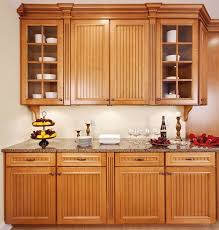
Bead Board Doors
That was a stupid idea….
With any luck you were smart enough not to Google kitchen porn before you clicked on this category. Gonna need to wash out those eyes if you did and clear your web browser history before grandma or one of the kids picks up your tablet or laptop.
Kitchen porn is that which is sexy and exciting but has no lasting qualities. It is a bad idea personified, your nemesis that will lure you onto the rocky coast of kitchen remodel remorse. You find it in national magazines and at the big box stores or through advertising that has a purpose of fleecing you of hard earned dollars while keeping the costs down on what they spend to do your remodel. Money in their pockets is the goals and if you tire of the monstrosity, well they make money again replacing what they sold you.
Put Down the Beadboard Door Sample…
- Sure is purty…..
- Crevices fill with grease and dirt over time
- Few sheets are true 1/4″ thickness or good two sides
- Usually has fibers crushed during manufacture
Beadboard is interesting and lots of folks wander in asking about using it in the door panels. The problem is that food, grease, lint, and fibers build up on the grooves over time.
The sheets are usually made with a soft tropical hardwood as the core and ran through grooving machines using roller dies to smash the wood fibers into the bead shape. This leaves a jagged edge that catches fibers out of any cloth used to clean it and the sheets are not true 1/4″ most of the time so there are gaps around the perimeter of the door panel to store more gunk.
And no, you can’t pile on enough clear coat or paint. The coating will flow right around the sharp points and surface tension will cause it to not fill the defects.

Five Part Drawer Fronts
That was a stupid idea…..
Five part drawer fronts, no, no, no, and no.
The narrow drawer fronts on the cabinet set to the left are five part fronts. Why are they named that? Two stiles, two rails, and a center panel. Five parts. Just little doors actually, made the same way.
They are not good for several reasons. First, that tiny little strip of material in the middle, the worst place to put a pull by the way, means the rails (horizontal parts) have to be less than 2.625″ wide, a standard quality rail/stile width.
Narrow boards tend to warp much easier due to the less width of the part. Fewer annual rings in the part and there is a magic number on width, too many annual rings and you have cupping of the lumber. Too few and all the annual rings are of the same angle and the part turns trapezoid shape across the width as it ages.
Betcha they will warp and the joints will crack..
- Standard drawer front is 6.1875″
- Minus 2.625 x 2, means 5.25″ of rails
- Center panel only 7/8″ wide
- Looks stupid Forrest. Just saying….
So, “cabinetmakers” try using narrower rails, 1.5″ instead of the normal 2.625″. About 1/2″ of each rail is grooved away, leaving a normal width “cheek” on the end of the rail at 2.125″ x .5″ surface area. That is what is glued to hold the drawer front or door together.
Taking that rail width down to 1.5″ means 1″ x .5″ of surface area to be glued. That is half the surface area of a properly sized rail.
Glue surface areas are like beams in engineering terms, half the depth or surface area, four times less holding power or strength. Coupled with the angle of the annual rings and you can have some warped top rails that move so much that the elastic qualities of the glue fail and the glue joint fails.
But they sure are pretty in the magazines and in the showroom.